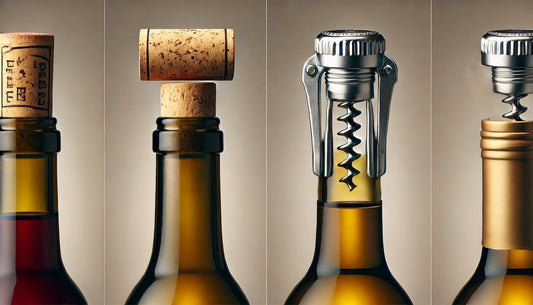Advantages
1. Tradition and Prestige:
- Cork has been used for centuries and is associated with premium wines and traditional winemaking.
- Many consumers perceive cork-sealed bottles as higher quality.
2. Micro-Oxygenation:
- Natural cork allows tiny amounts of oxygen to interact with the wine over time, which can benefit the aging process of certain wines (e.g., reds meant for long-term cellaring).
3. Sustainability:
- Cork is a renewable, biodegradable material harvested from cork oak trees, which support biodiversity and carbon sequestration.
4. Aesthetic and Ritual:
- The act of uncorking a bottle is often seen as part of the wine-drinking experience.
Disadvantages
- Natural cork can sometimes be contaminated with TCA (2,4,6-trichloroanisole), which causes a musty, off-putting odor and flavor in the wine.
2. Inconsistency:
- Cork quality can vary, leading to inconsistent sealing and potential oxidation or spoilage.
3. Cost:
- High-quality cork stoppers can be expensive, especially for premium wines.
METAL SCREW TOPS
Advantages
1. Consistency and Reliability:
- Screw tops provide an airtight seal, preventing oxidation and cork taint, which is especially important for wines meant to be consumed young.
2. Convenience:
- Screw tops are easy to open and reseal, making them practical for everyday wines and outdoor settings.
3. Cost-Effective:
- Screw tops are generally cheaper than high-quality corks, reducing production costs.
4. Suitability for Certain Wines:
- They are ideal for white wines, rosés, and light reds that are meant to be consumed fresh and do not benefit from aging.
Disadvantages
1. Perception:
- Screw tops are often associated with lower-quality or mass-produced wines, though this perception is gradually changing.
2. Limited Aging Potential:
- The airtight seal of screw tops prevents micro-oxygenation, which can be a disadvantage for wines intended for long-term aging.
3. Environmental Concerns:
- While recyclable, screw tops are made from aluminum, which has a higher environmental footprint compared to renewable cork.
When to Use Cork vs. Screw Tops
Use Cork:
- For premium wines intended for aging, especially red wines that benefit from micro-oxygenation.
- When tradition and consumer perception are important (e.g., fine wines, special occasions).
Use Screw Tops
- For wines meant to be consumed young, such as whites, rosés, and light reds.
- For everyday, affordable wines where convenience and consistency are priorities.
- In regions or markets where screw tops are widely accepted.
CONCLUSION






